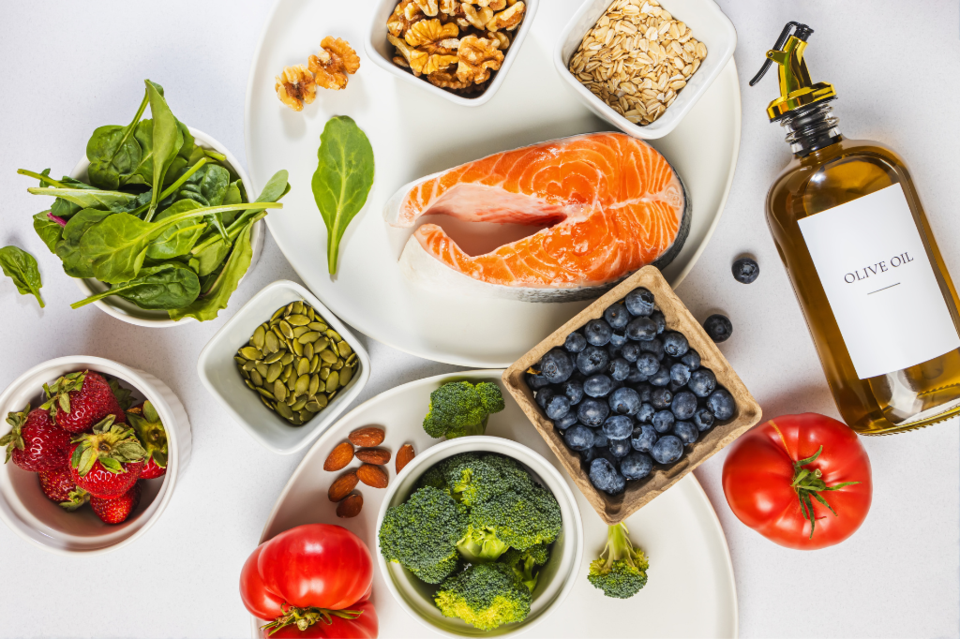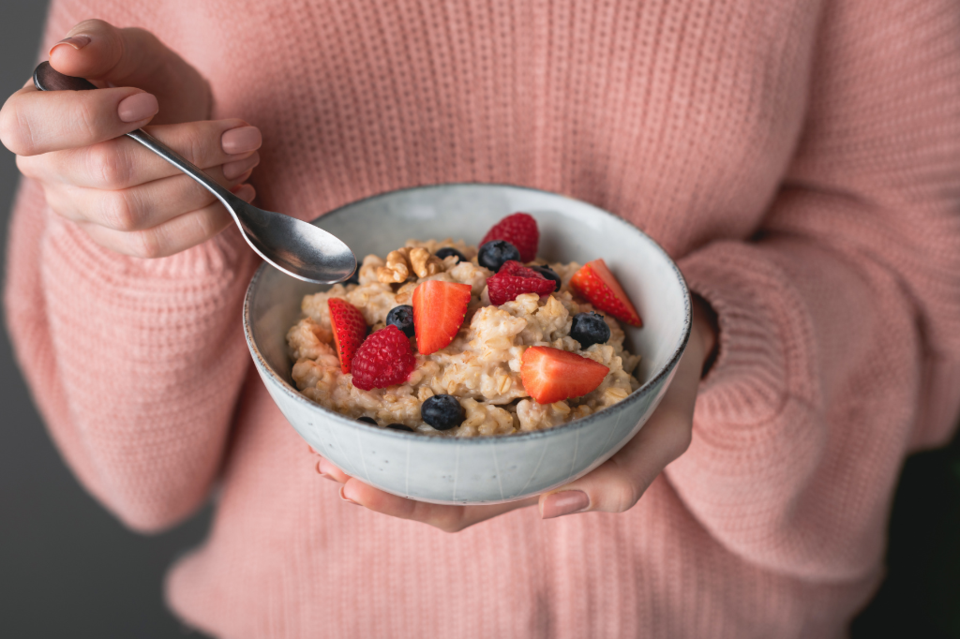Inflammation is the body’s natural response to injury or infection. When tissues are damaged, they release chemicals that signal white blood cells to begin repairs.
While this process is essential for healing, chronic inflammation can develop when the body’s immune response remains activated over time. According to the Mayo Clinic, chronic inflammation has been linked to serious health concerns, including heart disease, diabetes, and even certain cancers.
The good news? The foods you choose at the grocery store can either fuel inflammation or help keep it in check. Here’s how to make smart choices for your cart, your kitchen, and your health.
How food affects inflammation
Researchers are still uncovering the complex ways food impacts inflammation, but they have identified key patterns:
- Processed and ultra-processed foods—such as deli meats, sweetened cereals, and energy drinks—can trigger inflammatory responses in the body.
- Anti-inflammatory foods tend to be those that support overall health, including nutrient-rich fruits, vegetables, whole grains, and healthy fats.
- Foods high in antioxidants help combat oxidative stress, a process that can lead to increased inflammation over time.

What to add to your grocery list
A variety of nutrient-dense, whole foods work together to help reduce chronic inflammation. No single ingredient makes your diet anti-inflammatory—it’s about the combination of what you eat consistently.
When grocery shopping, look for:
- Beverages: Water, herbal and green teas, and coffee.
- Fruits: Oranges, grapefruit, berries, apples. bananas, and cherries.
- Vegetables: Broccoli, cauliflower, cabbage, turnips, radishes, cauliflower, pumpkin, bell peppers, tomatoes, carrots, kale, spinach, Swiss chard, arugula, and endive.
- Deep blue or purple foods: Blueberries, blackberries, plums, and egg plant, Concord grapes.
- Nuts and seeds: Walnuts, almonds, chia seeds, flaxseeds, and hemp seeds.
- Onions: A natural source of antioxidants.
- Plant-based proteins: Dried beans, lentils, lentil pasta, and soy products.
- Spices and herbs: Ginger, garlic, turmeric, cardamom, black pepper, cinnamon, and rosemary.
- Whole grains: Wheat, oats, rye, buckwheat, millet, quinoa, and brown rice.
- Wild caught fish: Bass, cod, haddock, halibut, herring, mackerel, red snapper, salmon, sardines, sea bass, or trout.
- Wild, organic meat/protein: Grass-fed cow, chicken, duck, lamb, turkey, and eggs.
Foods to limit or replace
Gradually reducing inflammatory foods while exploring healthier alternatives can help ease the transition to an anti-inflammatory diet.
Consider cutting back on:
- Fried foods: Instead of French fries or chips, try oven-baked fries with the skin on, kale chips, or air-fried alternatives.
- Processed meats: Hot dogs, sausage, and bacon can be swapped for plant-based proteins or enjoyed as an occasional side rather than the main dish.
- Refined carbohydrates: White bread, rice, pasta, and pastries can be mixed with whole-grain versions for a gradual shift.
- Unhealthy fats: Shortening, lard, and margarine can be replaced with small amounts of olive, canola, or avocado oil.
- Sugary beverages: Soda, sweetened teas, and flavoured coffees can be replaced with sparkling water, unsweetened tea, or coffee with minimal added sugar.

Meal ideas to get started
Building anti-inflammatory meals is simple when you focus on whole, colourful foods:
- Breakfast: Oatmeal topped with berries, a sliced apple, or a fruit smoothie.
- Lunch: A salad with dark leafy greens, beans, colourful vegetables, and a sprinkle of nuts or seeds.
- Dinner: Fill half your plate with vegetables, a quarter with whole grains, and a quarter with lean protein.
A great long-term approach to anti-inflammatory eating is the Mediterranean diet, which is rich in fruits, vegetables, whole grains, olive oil, and plant-based proteins while keeping red meat to a minimum.
Beyond food: other ways to reduce inflammation
While diet is a powerful tool, it’s not the only way to combat chronic inflammation. Maintaining a healthy body weight, getting at least 30 minutes of daily exercise, and managing stress can all help keep inflammation in check. Small, consistent changes to your grocery list and lifestyle can have lasting benefits for your overall health.
Please note that this is not a complete list of foods, but rather a start for you to learn to get in the habit of choosing whole foods and learn how to integrate them into your existing recipes or create new recipes.





